7 books about Comstock Lode (Nev.)
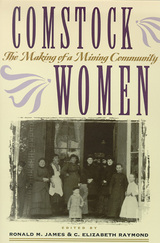
Comstock Women
The Making Of A Mining Community
Ronald M. James
University of Nevada Press, 1997
When it comes to Nevada history, men get most of the ink. Comstock Women is a collection of 14 historical studies that helps to rectify that reality. The authors of these essays, who include some of Nevada’s most prominent historians, demographers, and archaeologists, explore such topics as women and politics, jobs, and ethnic groups. Their work goes far in refuting the exaggerated popular images of women in early mining towns as dance hall girls or prostitutes. Relying primarily on newspapers, court decisions, census records, as well as sparse personal diaries and records left by the woman, the essayists have resurrected the lives of the women who lived on the Comstock during the boom years.
[more]
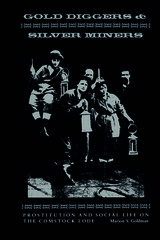
Gold Diggers and Silver Miners
Prostitution and Social Life on the Comstock Lode
Marion S. Goldman
University of Michigan Press, 1981
A study of prostitution in 19th-century Virginia City
[more]
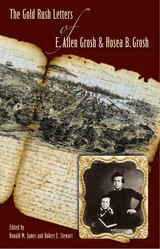
The Gold Rush Letters of E. Allen Grosh and Hosea B. Grosh
Ronald M. James
University of Nevada Press, 2016
When brothers Ethan and Hosea Grosh left Pennsylvania in 1849, they joined throngs of men from all over the world intent on finding a fortune in the California Gold Rush. Their search for wealth took them from San Francisco into the gold country and then over the Sierra into Nevada’s Gold Canyon, where they placer-mined for gold and discovered a deposit of silver. The letters they sent back to their family offer vivid commentaries on the turbulent western frontier, the diverse society of the Gold Rush camps, and the heartbreaking labor and frustration of mining. Their lively descriptions of Gold Canyon provide one of the earliest accounts of life in what would soon become the fabulously wealthy Comstock Mining District.
The Groshes’ letters are rich in color and important historical details. Generously annotated and with an introduction that provides a context for the brothers’ career and the setting in which they tried to make their fortune, these documents powerfully depict the often harsh realities of Gold Rush life and society.
The Groshes’ letters are rich in color and important historical details. Generously annotated and with an introduction that provides a context for the brothers’ career and the setting in which they tried to make their fortune, these documents powerfully depict the often harsh realities of Gold Rush life and society.
[more]
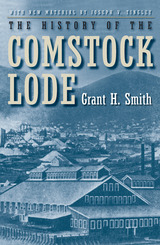
The History Of The Comstock Lode
Grant H. Smith
University of Nevada Press, 1998
No aspect of Nevada's history has captured so much attention as the heady boomtown days of the Comstock Lode strike in the mid-nineteenth century. The History of the Comstock Lode, first published in 1943, provided mining investors, engineers, and western historians with the first comprehensive, chronological history of mining operations on the Comstock from 1850 to 1997. Grant H. Smith labored on this project for over a decade to produce a volume that has become a classic in its field and a mainstay in all mining history collections. Of particular note is Smith's progressive record of the ways the mines were developed, the failures encountered, the bonanzas discovered, and the production of the mines. New edition co-published with the Nevada Bureau of Mines and Geology.
[more]
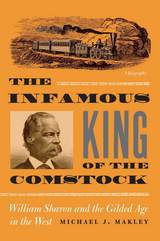
The Infamous King Of The Comstock
William Sharon And The Gilded Age In The West
Michael J. Makley
University of Nevada Press, 2009
William Sharon was one of the most colorful scoundrels in the nineteenth-century mining West. He epitomized the robber barons of the nation’s Gilded Age and the political corruption and moral decay for which that period remains notorious; yet he was also a visionary capitalist who controlled more than a dozen of the greatest mines on Nevada’s mighty Comstock Lode, built the Virginia & Truckee Railroad, manipulated speculation and prices on the San Francisco Stock Exchange, and revived the collapsed Bank of California. One enemy called him “a thoroughly bad man—a man entirely void of principle,” while a Comstock neighbor called him “one of the best men that ever lived in Virginia City.” Both descriptions were reasonably accurate. In this first-ever biography of one of Nevada’s most reviled historical figures, author Michael Makley examines Sharon’s complex nature and the turbulent times in which he flourished. Arriving in San Francisco shortly after the Gold Rush began, Sharon was soon involved in real estate, politics, banking, and stock speculation, and he was a party in several of the era’s most shocking business and sexual scandals. When he moved to Virginia City, Nevada’s mushrooming silver boomtown, his business dealings there soon made him known as the “King of the Comstock.” Makley’s engaging and meticulously researched account not only lays bare the life of the notorious but enigmatic Sharon but examines the broader historical context of his career—the complex business relationships between San Francisco and the booming gold and silver mining camps of the Far West; the machinations of rampant Gilded Age capitalism; and the sophisticated financial and technological infrastructure that supported Virginia City’s boomtown economy. The Infamous King of the Comstock offers a significant fresh perspective on Nevada and the mining West.
[more]
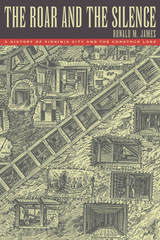
The Roar and the Silence
A History of Virginia City and the Comstock Lode
Ronald M. James
University of Nevada Press, 1998
Nevada’s Comstock Mining District has been the focus of legend since it first burst into international prominence in the late 1850s, and its principal settlement, Virginia City, endures in the popular mind as the West’s quintessential mining camp. But the authentic history of the Comstock is far more complex and interesting than its colorful image. Contrary to legend, Virginia City spent only its first few years as a ramshackle mining camp. The mining boom quickly turned it into a thriving urban center, at its peak one of the largest cities west of the Mississippi, replete with most of the amenities of any large city of its time.
The lure of the area’s fabulous wealth attracted a remarkably heterogenous population from around the world and offered employment to dozens of trades and thousands of people, both men and women, representing every one of the region’s diverse ethnic groups.
Ronald James’s brilliant account of the Comstock’s long and eventful history—the first comprehensive study of the subject in over a century—examines every aspect of the region and employs information gleaned from hundreds of written sources, interviews, archeological research, computer analysis, folklore, gender studies, physical geography, and architectural and art history, as well as over fifty rare photographs, many of them previously unpublished.
[more]
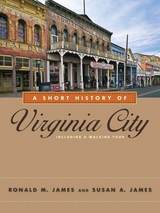
A Short History of Virginia City
Ronald M. James
University of Nevada Press, 2014
Founded in 1859, Virginia City quickly became world famous for its extraordinary prosperity. Over the next two decades, the mines of “the Richest City on Earth” yielded millions in gold and silver. The newly wealthy built mansions and churches, opera houses and schools, with furniture, fashions, and entertainment imported from Europe and the Far East. Here young Samuel Clemens, reporting for the Territorial Enterprise in 1863, first called himself Mark Twain. At its height Virginia City was a magnet for immigrants and the world leader in technological innovations in mining.
The city’s story did not end when the Comstock Lode played out. Beginning in the 1930s, bohemian artists, literati, and tourists were intrigued by this remnant of the Old West. The leader of Manhattan’s café society, Lucius Beebe, moved here and relaunched the Territorial Enterprise in 1950. Television’s most popular western from 1959 to 1973, Bonanza, located its fictional Ponderosa Ranch nearby. In the summer of 1965, a handful of Bay Area musicians, including Big Brother and the Holding Company, performed at the Red Dog Saloon and launched psychedelic rock, part of the inspiration for a defining decade of youth culture. Today it is both a National Historic Landmark District and a living community. Visitors come to enjoy its saloons and restaurants, admire its architecture, and learn from its museums and exhibits. A Short History of Virginia City will enhance their experience and will also be enjoyed by anyone interested in the history of Nevada, mining, and the Old West.
• Includes an illustrated walking tour describing more than thirty buildings and sites
The city’s story did not end when the Comstock Lode played out. Beginning in the 1930s, bohemian artists, literati, and tourists were intrigued by this remnant of the Old West. The leader of Manhattan’s café society, Lucius Beebe, moved here and relaunched the Territorial Enterprise in 1950. Television’s most popular western from 1959 to 1973, Bonanza, located its fictional Ponderosa Ranch nearby. In the summer of 1965, a handful of Bay Area musicians, including Big Brother and the Holding Company, performed at the Red Dog Saloon and launched psychedelic rock, part of the inspiration for a defining decade of youth culture. Today it is both a National Historic Landmark District and a living community. Visitors come to enjoy its saloons and restaurants, admire its architecture, and learn from its museums and exhibits. A Short History of Virginia City will enhance their experience and will also be enjoyed by anyone interested in the history of Nevada, mining, and the Old West.
• Includes an illustrated walking tour describing more than thirty buildings and sites
[more]
READERS
Browse our collection.
PUBLISHERS
See BiblioVault's publisher services.
STUDENT SERVICES
Files for college accessibility offices.
UChicago Accessibility Resources
home | accessibility | search | about | contact us
BiblioVault ® 2001 - 2024
The University of Chicago Press









